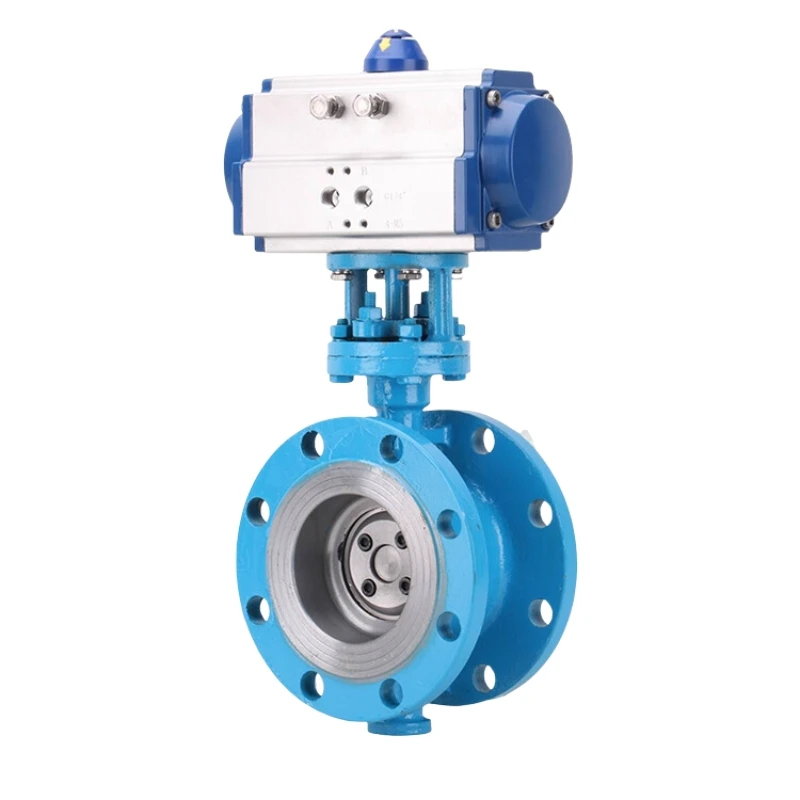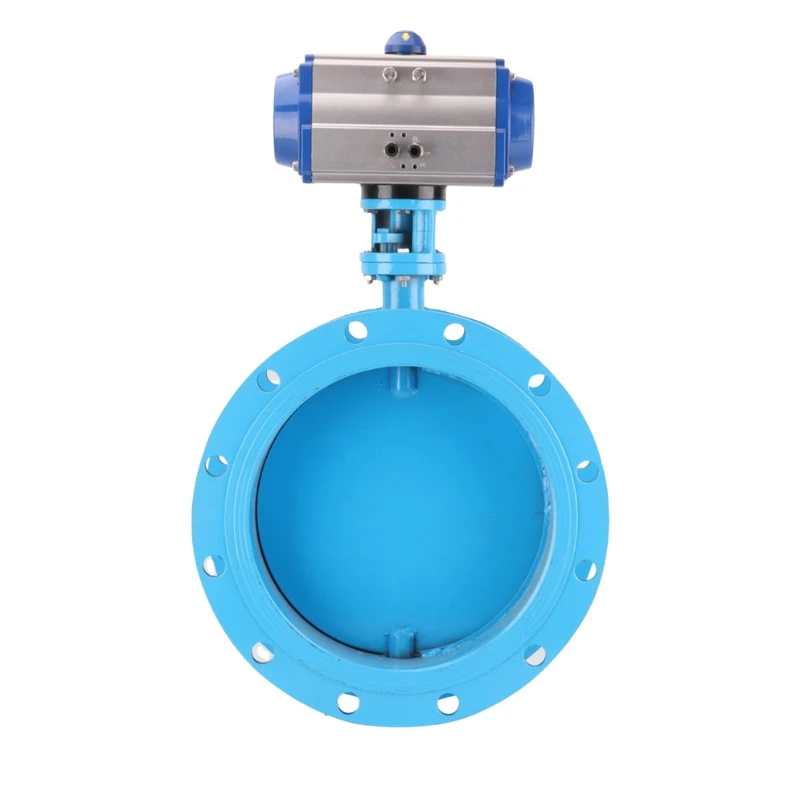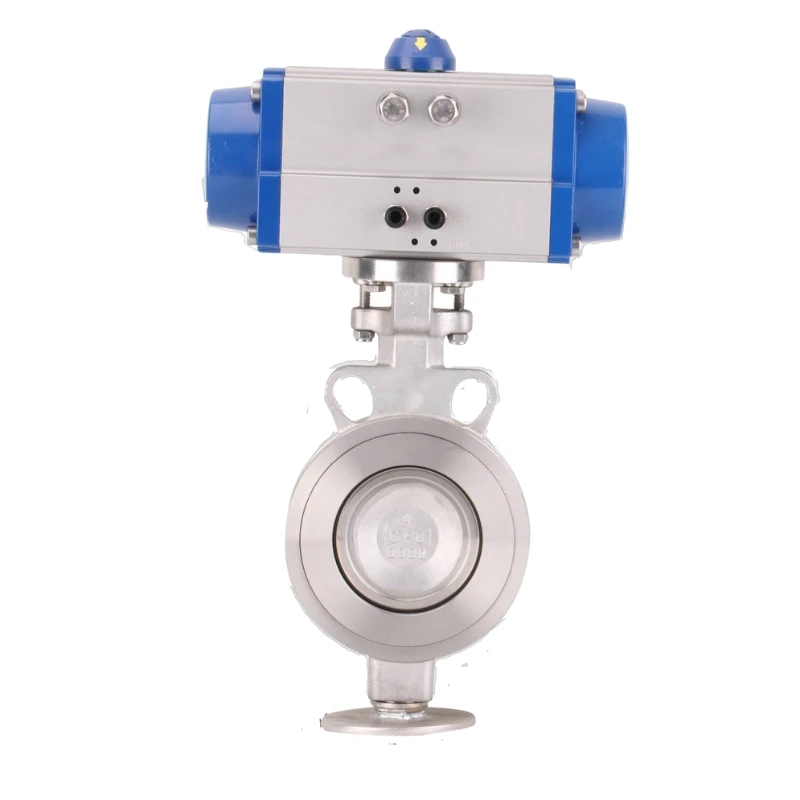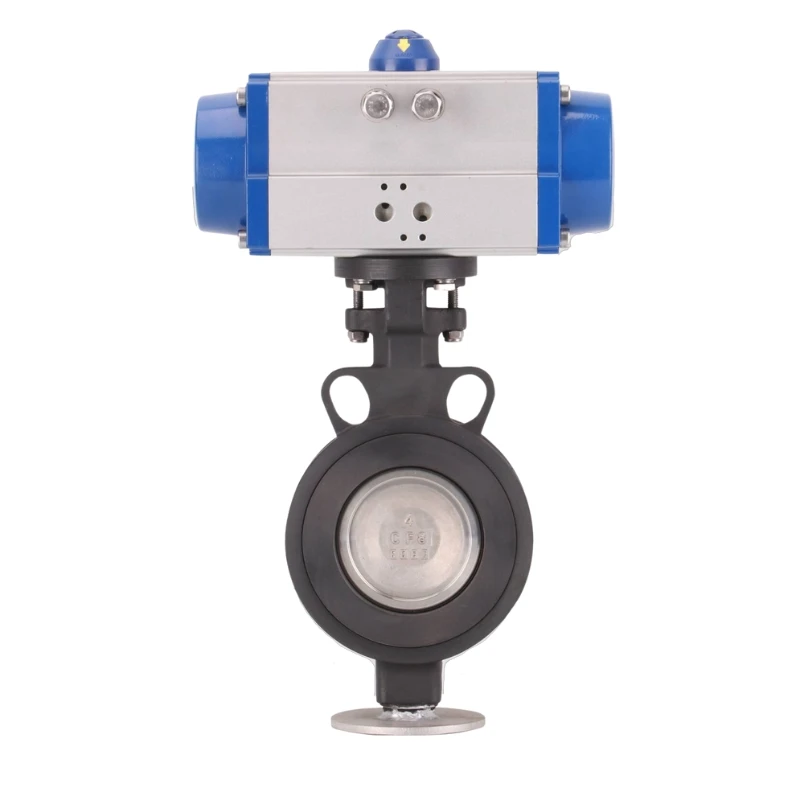Pneumatic Actuated Valve
What is a pneumatic valve actuator?
This device, an epitome of engineering, stands at the forefront of controlling fluid dynamics in an array of industrial settings. The pneumatic valve actuator, fundamentally, is a mechanism propelled by air pressure. It serves as the linchpin in converting compressed air into a force, which in turn actuates or moves a valve.
The complexity and utility of these actuators are underscored by their widespread application in various sectors. From regulating water flow in treatment plants to controlling gas lines in energy sectors, their versatility is unmatched. The pneumatic valve actuator's design is a testament to precision engineering, ensuring reliable and efficient control over the flow of liquids and gases.
What is the difference between pneumatic actuator and pneumatic valve?
In the field of valve automation, understanding the distinction between a pneumatic actuator and a pneumatic valve is essential. Both components are integral in controlling fluid flow, yet they serve distinct functions within a system.
Pneumatic Actuator:
A pneumatic actuator is a device that employs compressed air to generate force. This force is then applied to create motion, typically to open or close a valve. The actuator essentially acts as the muscle in the system, converting air pressure into mechanical energy. It is responsible for the actual movement of the valve components, facilitating control over the process.
Pneumatic Valve:
On the other hand, a pneumatic valve is a control element used to regulate the flow of fluids (gases or liquids) through a system. It operates by adjusting its internal passageways, either obstructing or allowing flow. The valve, in essence, is the gatekeeper of fluid control, determining the direction, rate, volume, and pressure of the flow.
How do pneumatic valve actuators work?
Pneumatic valve actuators are fascinating devices in the realm of industrial automation, known for their efficiency and reliability in controlling valve operations. Let's delve into how these actuators function:
-
Compressed Air as the Driving Force:
The core principle behind a pneumatic valve actuator is the use of compressed air. This air is the energy source that drives the actuator. -
Converting Air Pressure into Mechanical Motion:
Inside the actuator, compressed air is directed into a chamber. The pressure of this air exerts a force on a piston or diaphragm within the actuator, translating this pressure into linear or rotary motion. -
Actuating the Valve:
This mechanical motion is then transferred to the valve stem, causing the valve to open or close. The movement can be a quarter-turn (rotary) or multi-turn (linear), depending on the type of valve and actuator. -
Control and Regulation:
The operation of the pneumatic actuator is controlled through a series of valves and air supply lines. By regulating the air pressure and flow into the actuator, precise control over the valve position is achieved. -
Feedback Mechanisms:
Many pneumatic valve actuators are equipped with sensors and feedback systems. These systems provide real-time data on the valve position, ensuring accurate and efficient control of the fluid flow.
Pneumatic actuator valve parts
Pneumatic actuator valves are intricate assemblies with several key components that work together to ensure efficient and precise control of valve operation. Understanding these parts is crucial for anyone involved in their maintenance, design, or use. Here are the main components:
-
Actuator Casing:
The outer shell or housing that protects the internal components. It is typically made of robust materials to withstand various environmental conditions. -
Piston or Diaphragm:
The primary moving part within the actuator. In a piston actuator, the piston moves linearly, converting air pressure into mechanical force. In a diaphragm actuator, a flexible diaphragm is used for the same purpose. -
Springs (in Spring-Return Actuators):
These are used to return the valve to its original position in the event of air pressure loss. Spring-return actuators are common in safety-critical applications. -
Valve Stem Connector:
This connects the actuator to the valve stem, transmitting the motion from the actuator to the valve. -
Air Supply Port:
The entry point for compressed air into the actuator. The air supply is regulated by control valves to manage the actuator's movement. -
Control Valves:
These are used to regulate the flow and pressure of air into and out of the actuator. They play a crucial role in controlling the actuator's motion. -
Position Indicator:
A visual indicator that shows the current position of the valve, aiding in manual monitoring and adjustments. -
End Caps and Seals:
These are designed to seal the actuator from external contaminants and to keep the compressed air contained within the actuator. -
Mounting Interface:
This component facilitates the attachment of the actuator to the valve and possibly to other machinery or support structures. -
Feedback and Sensing Devices (optional):
Some actuators are equipped with sensors for position feedback, pressure sensors, or other monitoring devices to provide operational data and enable automated control systems.
What is 1 ball valve with pneumatic actuator?
A "1 ball valve with pneumatic actuator" refers to a single-ball valve configuration operated by a pneumatic actuator. Key aspects include:
- Ball Valve: This is a valve with a spherical disc, the part of the valve that controls the flow through it. When the ball's hole is in line with the flow, it is open, and when it is perpendicular, the flow is blocked.
- Pneumatic Actuator: This component uses compressed air to automate the opening and closing of the valve. It's connected to the valve stem, and its movement controls the position of the ball.
- Application: Such setups are common in applications requiring fast and reliable control of fluid or gas flow, often in industrial environments.
What is 3 way ball valve with pneumatic actuator?
A "3-way ball valve with pneumatic actuator" involves a more complex valve system. Its characteristics are:
- 3-Way Ball Valve: Unlike the standard ball valve, a 3-way ball valve has three ports or openings. This configuration allows for more complex flow paths - diverting, mixing, or shutting off flow from multiple sources.
- Pneumatic Actuator: Similar to the single-ball valve system, this actuator uses air pressure to control the valve. The actuator’s movement rotates the ball to different positions, aligning its ports with the valve's inlets and outlets.
- Versatility: This setup is advantageous in systems where fluid direction control is necessary, such as in mixing or diverging flow paths in processing plants.
How to design spool valve for pneumatic actuator?
Designing a spool valve for a pneumatic actuator involves several critical steps and considerations to ensure it functions efficiently and reliably. Here's a structured approach to designing a spool valve:
-
Define the Application Requirements:
- Determine the specific needs of the application, including the type of fluid (air, gas, oil), pressure range, flow rate, and environmental conditions.
- Assess the required actuator type (linear or rotary) and the corresponding valve control needs.
-
Select the Spool Valve Type:
- Choose between a directional control spool valve (common for pneumatic actuators) that can direct flow in multiple paths.
- Decide on the number of ports and positions needed (e.g., 3/2, 4/2, 5/2, etc.).
-
Design the Spool:
- The spool is the core part that regulates flow and direction. Its design must ensure smooth operation with minimal friction.
- Determine the spool's dimensions and material based on the pressure and flow rate requirements.
-
Incorporate Seals and O-Rings:
- Design appropriate sealing mechanisms to prevent leaks and maintain pressure integrity.
- Select materials for the seals that are compatible with the working fluid and environmental conditions.
-
Plan the Actuator Mechanism:
- Design the actuator mechanism (manual, solenoid, pneumatic, etc.) that will control the spool's position.
- Ensure the actuator provides adequate force and precision for the valve's operation.
-
Design the Valve Body:
- Create a layout for the ports and pathways in the valve body.
- Choose materials for the valve body considering factors like strength, corrosion resistance, and compatibility with the working fluid.
-
Ensure Proper Flow Dynamics:
- Analyze flow dynamics to ensure that the valve provides efficient flow with minimal pressure drop.
- Consider the use of computational fluid dynamics (CFD) software for simulation and optimization.
-
Incorporate Safety and Maintenance Features:
- Include safety features like pressure relief in case of overpressure.
- Design for ease of maintenance and serviceability.
-
Testing and Prototyping:
- Build a prototype based on the design and test it under various conditions.
- Make adjustments based on testing feedback to optimize performance and reliability.
-
Compliance and Standards:
- Ensure the design complies with relevant industry standards and certifications.
How to repair pneumatic valve actuator?
To repair a pneumatic valve actuator, first, depressurize and isolate the system, then disassemble the actuator, inspect for damage, replace worn parts like seals, clean and lubricate components, reassemble, test for proper function, and reintegrate into the system while ensuring safety precautions are followed throughout the process.
Pneumatic Valve Actuators Manufacturer
We are Pneumatic Valve Actuator Supplier.And Pneumatic valve actuator is powered by compressed air and is the driving device for opening and closing pneumatic ball valves, pneumatic butterfly valves, pneumatic gate valves, pneumatic globe valves, pneumatic diaphragm valves, pneumatic control valves and other pneumatic series of angular stroke valves. It is an ideal device for realizing centralized or independent control of industrial automation pipelines in long distances.
- Valve Options: Pneumatic actuator ball valve , Pneumatic actuator butterfly valve, Pneumatic flange ball valve, Pneumatic gate valve and Pneumatic globe valve,Pneumatic PVC ball valve,Pneumatic PVC butterfly valve
- Actuator Types: Spring return(single acting) Pneumatic Actuator and Double acting Pneumatic Actuator
- Body Material of Pneumatic Actuator: Aluminum alloy pneumatic actuators, stainless steel pneumatic actuators
- Valve Types: Ball valves,Butterfly valves, High performance valves, Gate valves, Globe valves,2psc ball valve,3psc ball balve,Two way ball valve,Three way ball valve ect..
- Valve Body Material: Stainless steel,Cast steel,Ductile cast iron,PVC,UPVC
- Applicable Medium: Water,Gas, Oil, Acid, Alkali, etc
- Additional: if your have any requirements about our Pneumatic actuated valves,please welcome to write mail to us @ [email protected] for getting more information and service from us.











